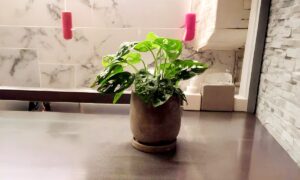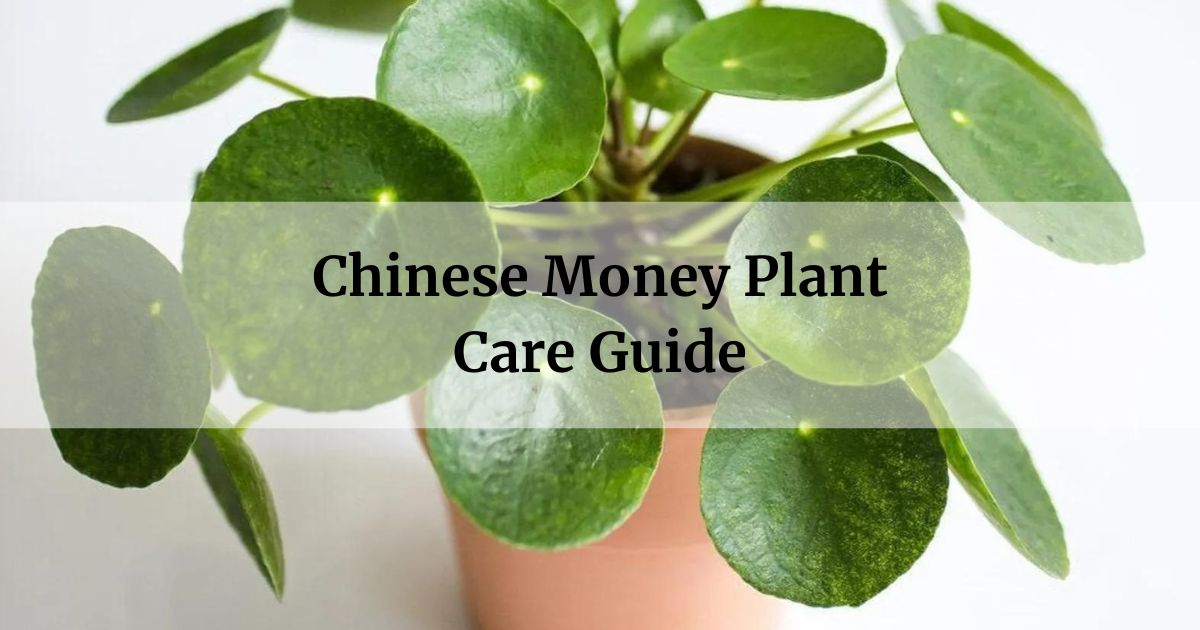
The Chinese Money Plant has risen in popularity over the past few years, and it’s easy to see why – those cute, coin-shaped leaves are irresistible! As one of the easiest houseplants to care for, it’s no wonder the Pilea peperomioides has become one of my favorite low-maintenance greens. Their effortless nature and bubbly look brighten up any home.
- Pros
- Very low maintenance
- Cute succulent-like leaves
- Fast-growing
- Non-toxic
- Cons
- Can get leggy without proper pruning and training
In this article
- 1 Appearance of the Chinese Money Plant
- 2 Toxicity Level of the Chinese Money Plant
- 3 Light Requirements for the Chinese Money Plant
- 4 Watering the Chinese Money Plant
- 5 Fertilizing the Chinese Money Plant
- 6 Potting the Chinese Money Plant
- 7 Propagation of the Chinese Money Plant
- 8 Growth and Development of the Chinese Money Plant
- 9 Managing Pests and Diseases for the Chinese Money Plant
- 10 Complimentary Plants with your Chinese Money Plant
Appearance of the Chinese Money Plant
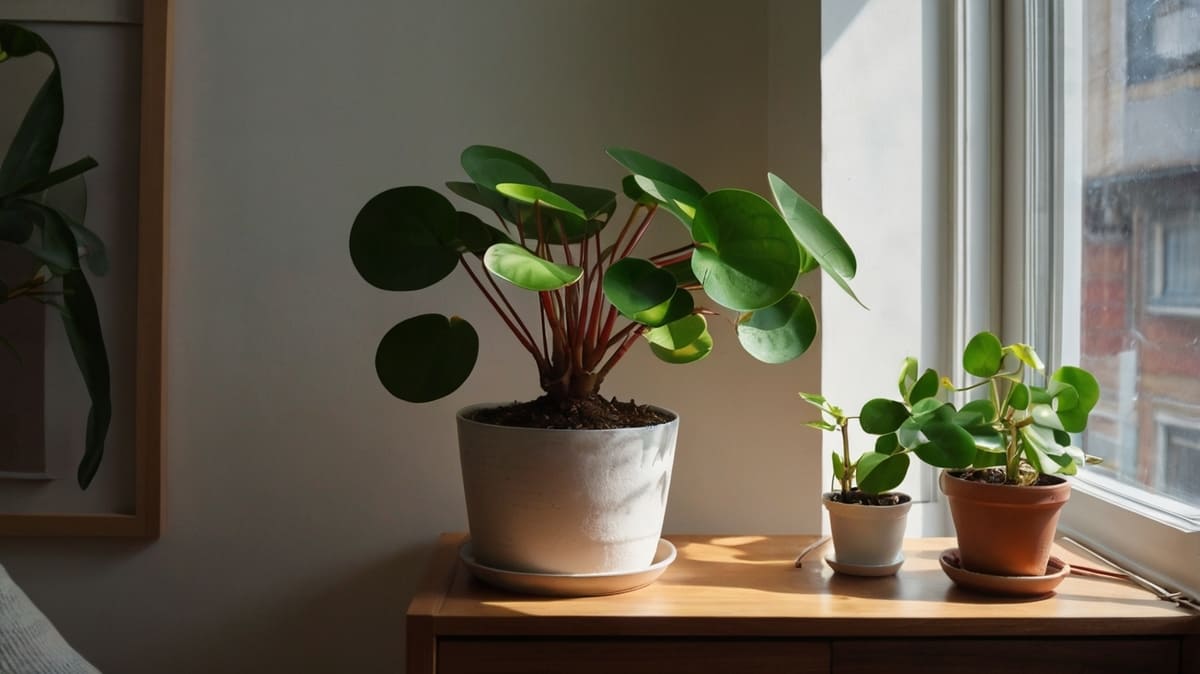
Chinese Money Plants form bushy clumps of perfectly round, flat leaves that resemble coins stacked neatly on top of each other. The leaves emerge bright green with contrasting red undersides, providing striking color. They grow rapidly in optimum conditions, forming dense mounds 6-10″ tall. Their unique foliage adds an eccentric touch to any decor.
- Leaves: Round, flat, coin-like appearance up to 1″ wide
- Color: Bright green topside, deep red underside
- Size: Dense mounds 6-10″ tall
Great for People who:
Love low-effort plants like succulents but want something less spiky. Their forgiving nature makes them ideal for busy schedules too.
Great for these Spaces:
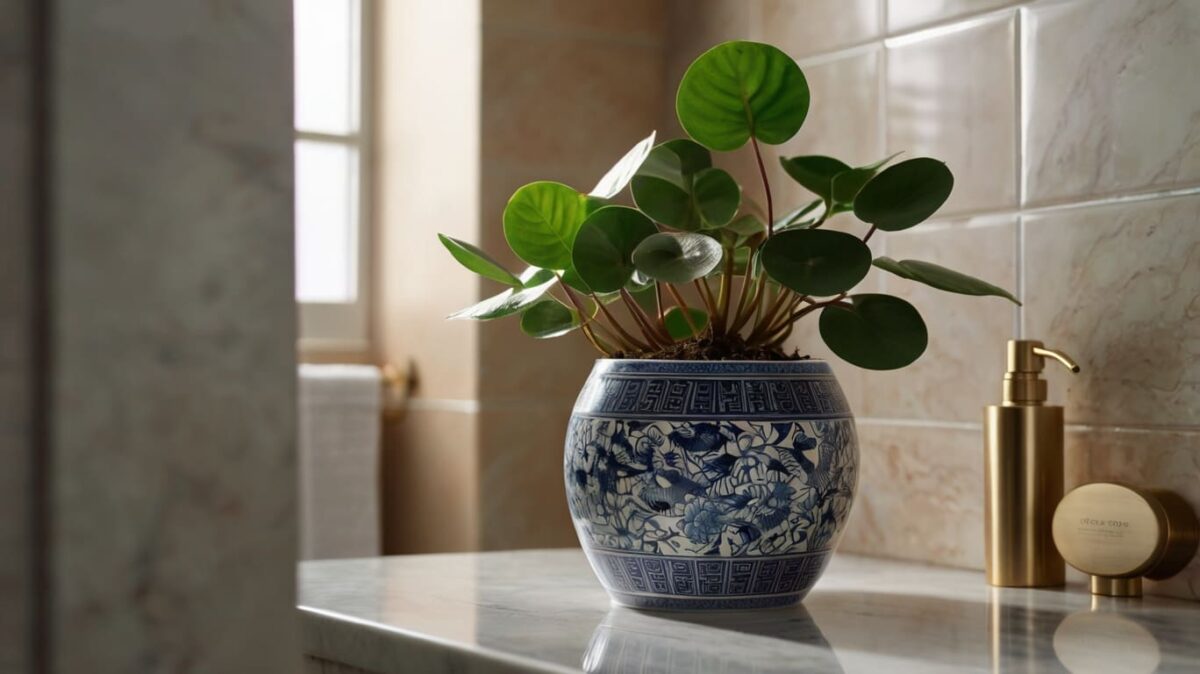
Brightly lit kitchens, bathrooms, or offices where their playful look adds levity. Works well on desks or shelves.
Caring for the Chinese Money Plant
Chinese Money Plants are incredibly easy to care for. I find they’re happiest when the soil dries slightly between waterings. Be sure drainage holes allow excess water to pass through. Pileas also love sunlight but tolerate low light well. Their needs are simple – just don’t overwater!
- Water when top 1” is dry
- Tolerates low light but thrives in sunlight
Toxicity Level of the Chinese Money Plant
All parts of the Chinese Money Plant are considered non-toxic. However, like most houseplants, it’s better to keep them out of reach of children and pets to prevent accidental ingestion.
Light Requirements for the Chinese Money Plant
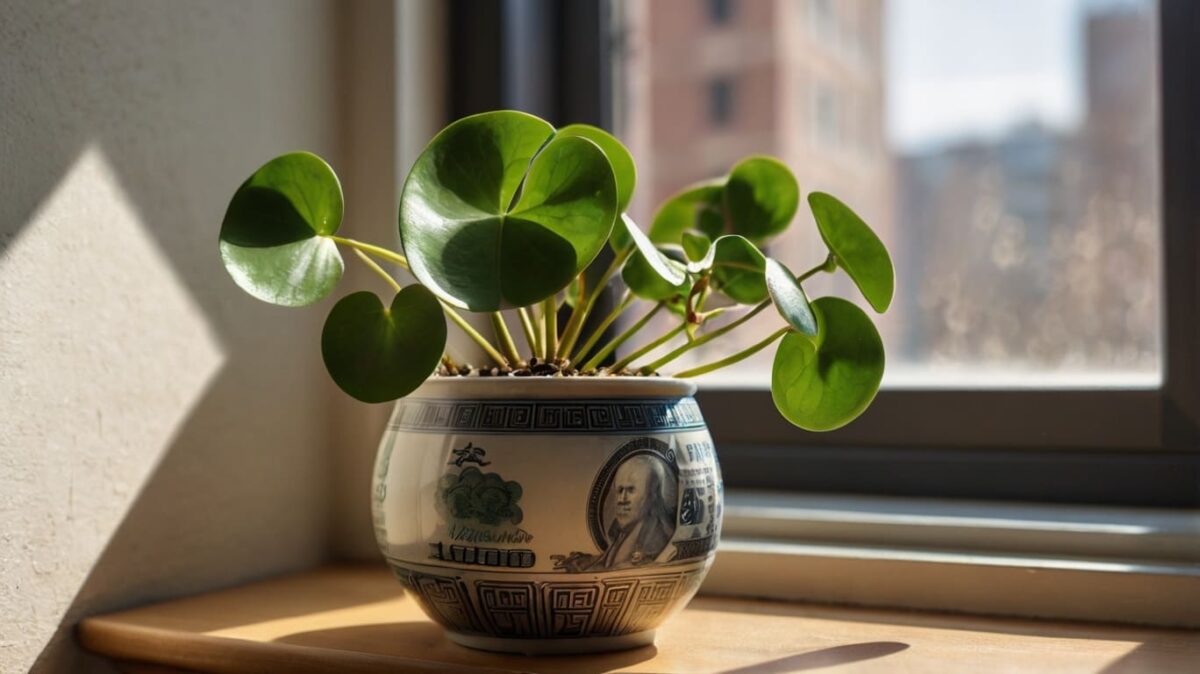
While Chinese Money Plants thrive on a sunny windowsill, receiving at least 4-6 hours of direct or indirect light, they are also very tolerant of lower light conditions. Their leaves may become loose and leggy without sufficient light but won’t die. East or west facing exposures suit them perfectly. They grow well under fluorescent office lighting too.
| Light Conditions | Effect on Chinese Money Plant |
|---|---|
| Bright Indirect Light | Ideal – produces dense foliage |
| Low Light | Tolerates but may become leggy |
| Direct Sunlight | Can tolerate a few hours but prefers bright filtered sunlight |
Watering the Chinese Money Plant
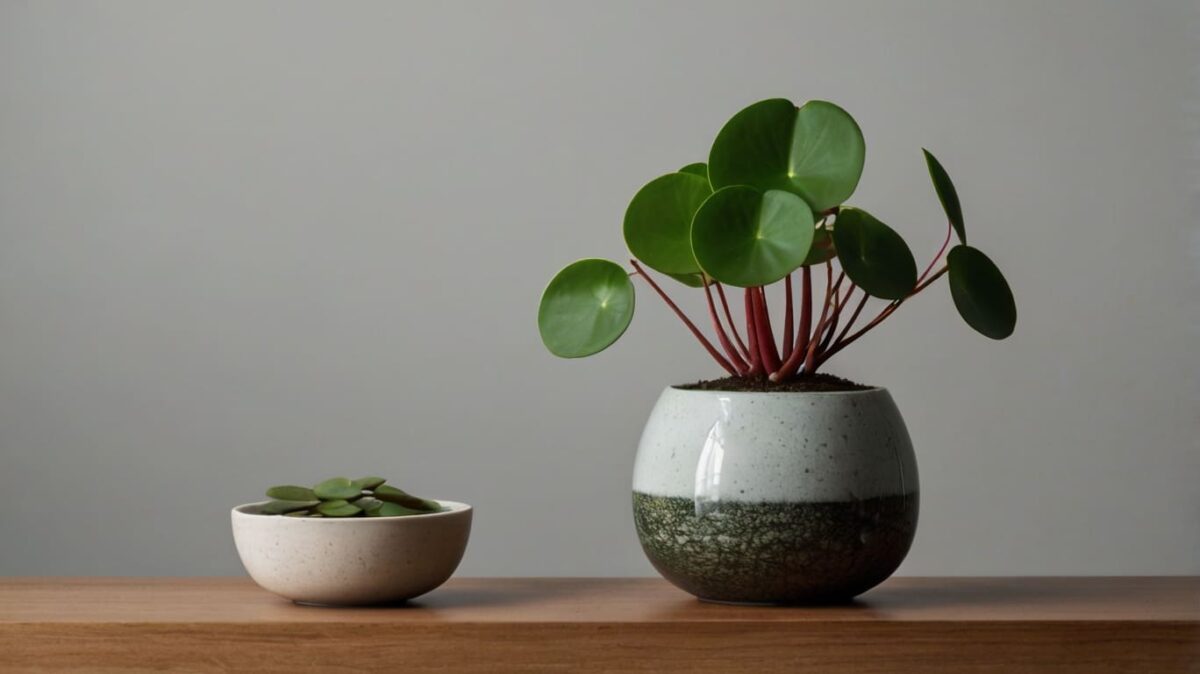
Chinese Money Plants like to dry out slightly between waterings. I find checking every 5-7 days by poking my finger an inch into the soil works well. Water thoroughly when the top inch feels dry. Be sure to dump any excess water from the outer pot or saucer. Avoid soggy soil which causes droopy leaves. Consistency is key for thriving Pileas.
- Check soil every 5-7 days
- Water thoroughly when top inch feels dry
- Remove any standing water
Fertilizing the Chinese Money Plant

Schultz All Purpose 10-15-10 Plant Food Plus, 4-Ounce [2- Pack]
- For all Indoor and Outdoor Plants
- Just 7 drops of water every time you water
- All purpose formula that feeds all indoor and outdoor plants
- Excellent for transplanting, repotting and rooting.
- Easy to measure dropper
These fast growers enjoy an occasional boost, but don’t require heavy feeding. In the spring and summer, I use a diluted liquid fertilizer monthly. In the fall and winter, switch to every 6-8 weeks. Flush out any fertilizer residue from the drainage holes. Refeeding encourages continued dense growth.
| Month | Recommended Dosage |
|---|---|
| Spring/Summer | Dilute liquid monthly |
| Fall/Winter | Dilute liquid every 6-8 weeks |
Potting the Chinese Money Plant
Pileas enjoy being slightly root bound and do well in containers. Repot in spring every 1-2 years using a well-draining potting mix. Disturb the root ball minimally and replant so the top of roots is level with the soil surface. A 4-6″ pot allows ample room for growth. Refresh topsoil annually to optimize vigor.
- Repot every 1-2 years in spring
- Use potting mix with drainage
- Top of roots level with soil
- 4-6″ pot provides room to grow
Propagation of the Chinese Money Plant
Chinese Money plants are easily propagated through stem cuttings. In spring or summer, cut 4-6” sections below a set of leaves and remove leaves from the bottom half to dry. Place cuttings in water until roots form from the nodes in 1-4 weeks. Pot rooted cuttings to create more full Pileas.
- Take 4-6″ stem cuttings in spring/summer
- Remove bottom leaves, place in water
- Pot when roots emerge 1-4 weeks later
Growth and Development of the Chinese Money Plant
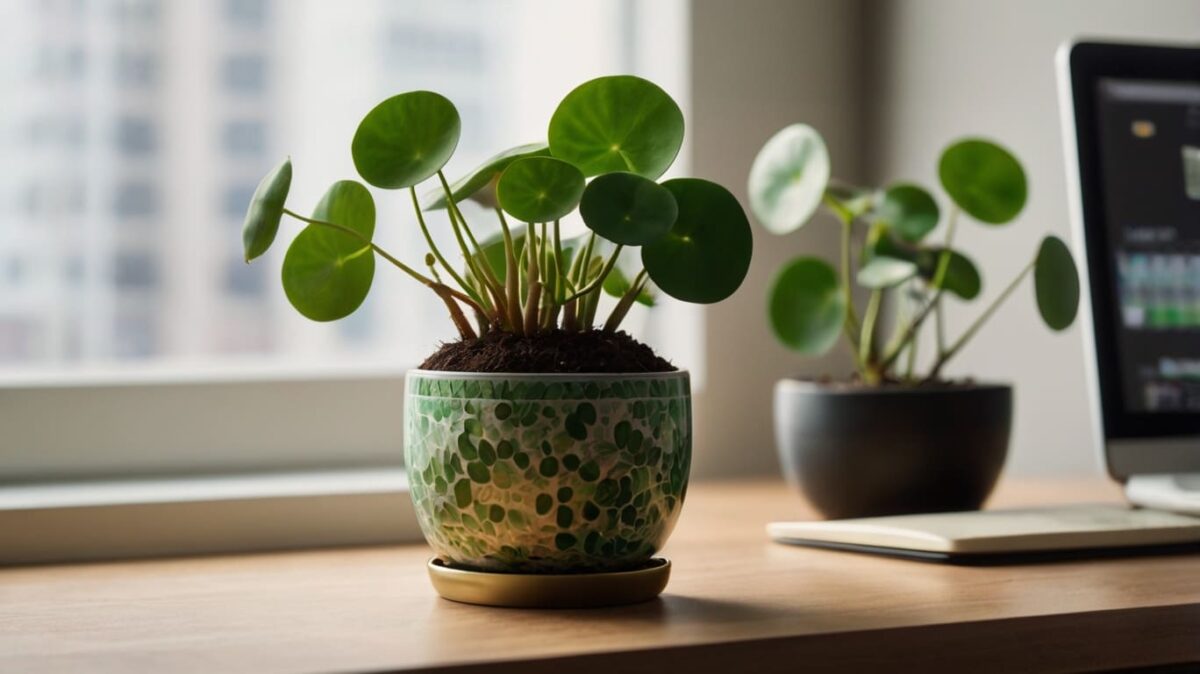
Pileas grow rapidly when conditions are optimal. They flourish with medium to bright indirect sunlight, consistent moisture, and room to spread out. The ideal temperature range is 65-80°F. To encourage bushiness, regularly pinch or prune the stem tips back to the node above a set of leaves. This promotes branching for fuller containers.
- Bright indirect light
- 65-80°F temperature
- Moisture-retentive soil
- Pinch stems for bushiness
Managing Pests and Diseases for the Chinese Money Plant
These resilient plants are generally quite sturdy and resistant to issues if underlying needs are met. Watch for signs of pests like spider mites under magnification. Yellow leaves could indicate overwatering. Keep plants in mesh baskets to prevent soil-borne diseases if repotting. Contact me if you need assistance troubleshooting any problems!
Complimentary Plants with your Chinese Money Plant
Frequently asked questions
How do I make my Pilea bushier?
Regularly pinch or prune stem tips back to nodes above leaves to encourage branching.
My Pilea is getting taller. How do I keep it short?
In addition to pinching, rotate the pot periodically to encourage fullness over height. You can also trim leggy stems.
When should I move my Pilea to a larger pot?
Repot in spring every 1-2 years when roots peek through the drainage holes into a container 1-2 inches larger.
With their charismatic round leaves and lenient nature, Chinese Money Plants add visual interest to any space. Their willingness to thrive in various conditions makes them ideal for novice or forgetful plant parents too. Give them occasional pruning and fertilizer for continued compact growth. I hope you’ll enjoy this playful addition!
Happy gardening!

